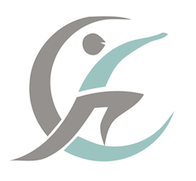
Covid 19 Safe Procedures
24 Dec 2025
In order to return to work safely, I have referred to the Complementary & Natural Healthcare Council guidelines, the latest Government Guidelines, undertaken an HSE risk assessment and referred to the NHS guidelines to document the definition of moderate and high risk category clients as well as the latest understanding of COVID-19 symptoms.
The purpose of this document is to outline the full procedures before, during and after a treatment. If you require any further information, please contact me. I will update this page as my procedures change, keeping them in line with any recommendations made by the CNHC or Government.
Client Preparation and Expectations
- On entering the premises, I will provide you with hand sanitiser, and will ask you not to touch any door handles or surfaces.
- The wearing of a mask is no longer compulsory for clients.
- At the end of the treatment, where possible, please pay using contactless or an online payment transfer. I will accept cash only, although the exact amount only.
- If you experience any symptoms within 7 days of the appointment, please contact me so that I can take any relevant and mandatory steps for the safety and wellbeing of my household and other clients.
My Personal Preparation
- I will not work if I am unwell or suffering with any cold/flu or covid related symptoms.
- Due to the close contact nature of my work, as a minimum I will wear a freshily laundered apron. I will happily wear a mask if you would like me to and if for any medical reason where I think it would be safer for me to do so.
- Prior to a client arriving, I will wash my hands using appropriate sanitising handwash. After I have greeted the client, I will reapply my hands with sanitiser before commencing the treatment.
- I do not plan to use gloves to undertake my treatments (this is also considered optional) however, I do have a supply of gloves available should a client prefer I use them.
- At the end of the treatment, I will dispose of my PPE into the pedal bin in the treatment room, and exit the room to wash my hands using appropriate sanitising handwash.
Preparation of my treatment room
- To simplify the frequent clearing required, the treatment room will look slightly different. It will be cleaned thoroughly before every appointment.
- I will still use towels for clients, for warmth and modesty. At the end of the appointment used towels will be placed in a pedal wash bin. They will be washed at 60 degrees and tumble dried daily.
- The small window in the room will remain open during the treatment to provide ventilation, although this can be closed if a client feels cold or uncomfortable. After the appointment, all windows and doors will be opened to allow fresh air to circulate.
- There will be a minimum of 15 minutes scheduled between each client to allow for the deep cleaning procedures. As such, clients are reminded to arrive on time and leaving times will need to be observed (regardless of when clients arrive).
COVID-19 Risk Definitions
Detailed definitions can be found on the NHS website here.
Those in a ‘high risk’ category include:
- have had an organ transplant;
- are having chemotherapy or antibody treatment for cancer, including immunotherapy;
- are having an intense course of radiotherapy (radical radiotherapy) for lung cancer;
- are having targeted cancer treatments that can affect the immune system;
- have blood or bone marrow cancer (such as leukaemia, lymphoma or myeloma);
- have had a bone marrow or stem cell transplant in the past six months or are still taking immunosuppressant medicine.
- have been told by a doctor that they have a severe lung condition such as cystic fibrosis, severe asthma, or severe Chronic Obstructive Pulmonary Disease (COPD);
- have a condition that means they have a very high risk of getting infections such as Severe Combined Immunodeficiency (SCID) or sickle cell;
- are taking medicine that makes them much more likely to get infections (such as high doses of steroids); have a serious heart condition and are pregnant.
Those in the ‘moderate risk’ groups include:
- 70 or older;
- Pregnant;
- have a lung condition that's not severe (such as asthma, COPD, emphysema or bronchitis);
- have heart disease (such as heart failure);
- have diabetes;
- have chronic kidney disease;
- have liver disease (such as hepatitis);
- have a condition affecting the brain or nerves (such as Parkinson's disease, motor neurone disease, multiple sclerosis or cerebral palsy);
- have a condition that means they have a high risk of getting infections;
- are taking medicine that can affect the immune system (such as low doses of steroids);
- are very obese (a BMI of 40 or above).